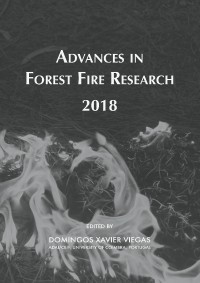Please use this identifier to cite or link to this item:
https://hdl.handle.net/10316.2/44702| DC Field | Value | Language |
|---|---|---|
| dc.contributor.author | Parsons, Russ | |
| dc.contributor.author | Pimont, Francois | |
| dc.contributor.author | Wells, Lucas | |
| dc.contributor.author | Cohn, Greg | |
| dc.contributor.author | Jolly, W. Matt | |
| dc.contributor.author | Davis, Brett | |
| dc.contributor.author | Coligny, Francois de | |
| dc.contributor.author | Mell, William “Ruddy” | |
| dc.contributor.author | Rigolot, Eric | |
| dc.contributor.author | Dupuy, Jean-Luc | |
| dc.date.accessioned | 2018-11-11T15:10:41Z | |
| dc.date.accessioned | 2020-09-06T17:31:06Z | - |
| dc.date.available | 2018-11-11T15:10:41Z | |
| dc.date.available | 2020-09-06T17:31:06Z | - |
| dc.date.issued | 2018 | - |
| dc.identifier.isbn | 978-989-26-16-506 (PDF) | |
| dc.identifier.uri | https://hdl.handle.net/10316.2/44702 | - |
| dc.description.abstract | Fuel treatments offer a means of proactively mitigating risks to firefighters and communities, and to restore altered ecosystems. The cost and potential impacts associated with implementing such treatments, however, suggest a need for thorough understanding of their effectiveness before they are carried out on the ground, particularly at landscape scales. At present, modelling tools used to evaluate fuel treatments are often limited in their ability to represent fuels or fuel/fire interactions. This is particularly true for treatments that seek to modify forest spatial patterns; most modelling frameworks are not spatially explicit and thus can only describe forests in terms of overall average characteristics. Here, we describe STANDFIRE, a prototype 3D platform for modeling wildland fuels and fire behavior at stand scales. Leveraging a powerful core modeling architecture, STANDFIRE links a forest growth model to physics-based fire behavior models, providing a means by which detailed fuels data can be used as input in physics-based fire behavior simulations which can explore fuel treatment effectiveness or sensitivity to environmental conditions. We describe the model, some applications, and plans for continuing development. | eng |
| dc.language.iso | eng | - |
| dc.publisher | Imprensa da Universidade de Coimbra | por |
| dc.relation.ispartof | http://hdl.handle.net/10316.2/44517 | por |
| dc.rights | open access | - |
| dc.subject | Fuel modeling | eng |
| dc.subject | Fuel treatments | eng |
| dc.subject | Fire behavior | eng |
| dc.subject | Physics-based | eng |
| dc.subject | WFDS | eng |
| dc.subject | FIRETEC | eng |
| dc.subject | FuelManager | eng |
| dc.title | Modeling fuels and treatment effects in 3D with STANDFIRE | por |
| dc.type | bookPart | por |
| uc.publication.firstPage | 1384 | - |
| uc.publication.lastPage | 1388 | - |
| uc.publication.location | Coimbra | por |
| dc.identifier.doi | 10.14195/978-989-26-16-506_185 | - |
| uc.publication.section | Chapter 7 - Short Contributions | por |
| uc.publication.digCollection | PB | por |
| uc.publication.orderno | 185 | - |
| uc.publication.area | Ciências da Engenharia e Tecnologias | por |
| uc.publication.bookTitle | Advances in forest fire research 2018 | - |
| uc.publication.manifest | https://dl.uc.pt/json/iiif/10316.2/44702/203967/manifest?manifest=/json/iiif/10316.2/44702/203967/manifest | - |
| uc.publication.thumbnail | https://dl.uc.pt/retrieve/11056789 | - |
| uc.publication.parentItemId | 55072 | - |
| uc.itemId | 68786 | - |
| item.fulltext | With Fulltext | - |
| item.grantfulltext | open | - |
| Appears in Collections: | Advances in forest fire research 2018 | |
Files in This Item:
| File | Description | Size | Format | |
|---|---|---|---|---|
| modeling_fuels_and_treatment_effects.pdf | 821.29 kB | Adobe PDF |  |
Items in DSpace are protected by copyright, with all rights reserved, unless otherwise indicated.
